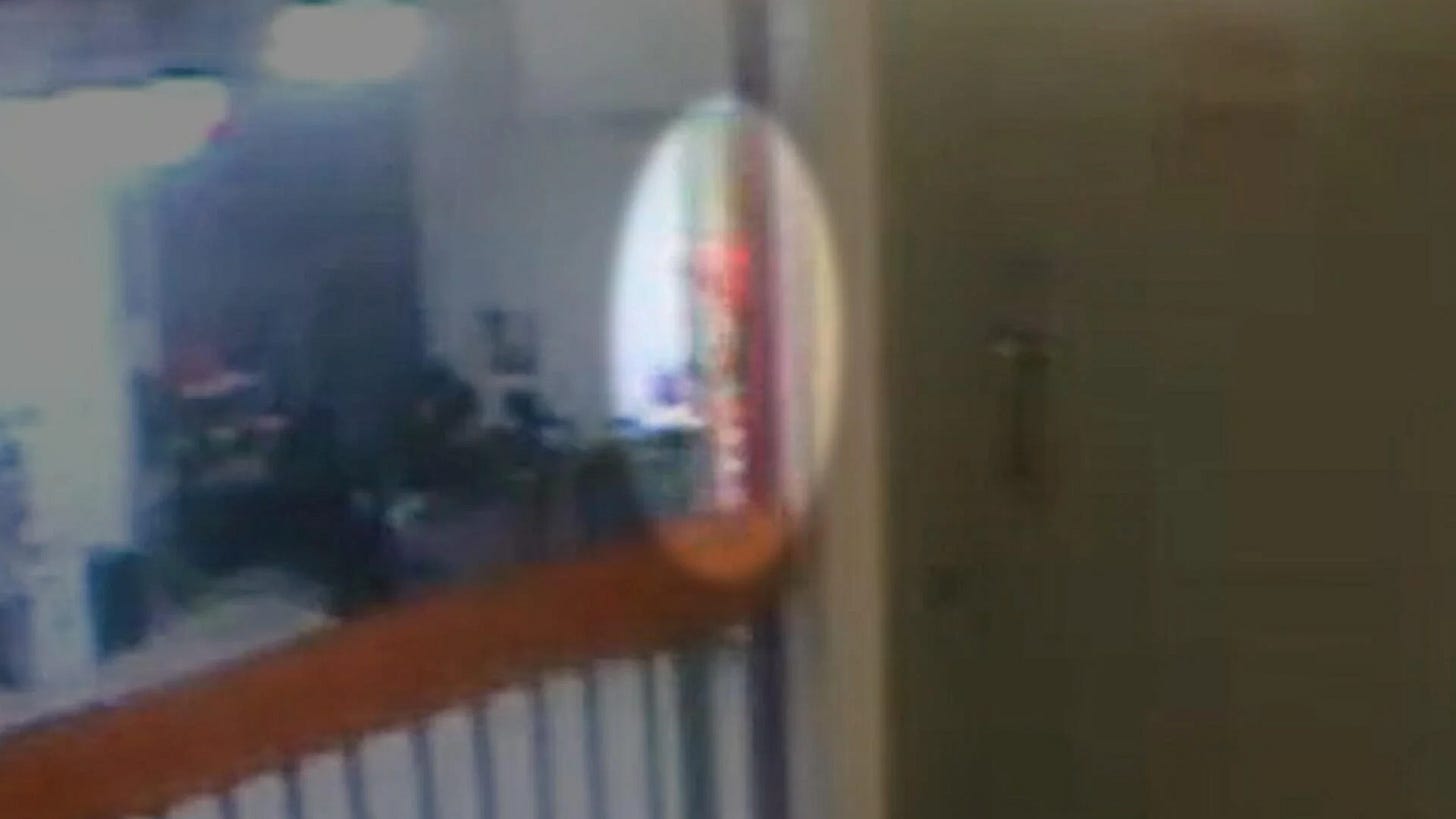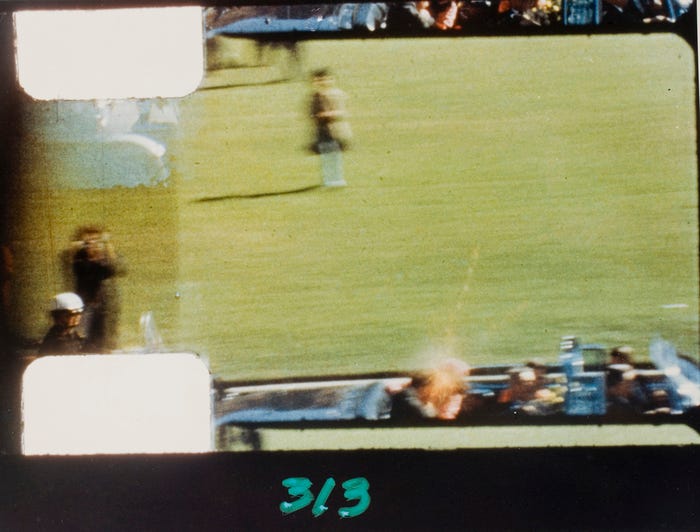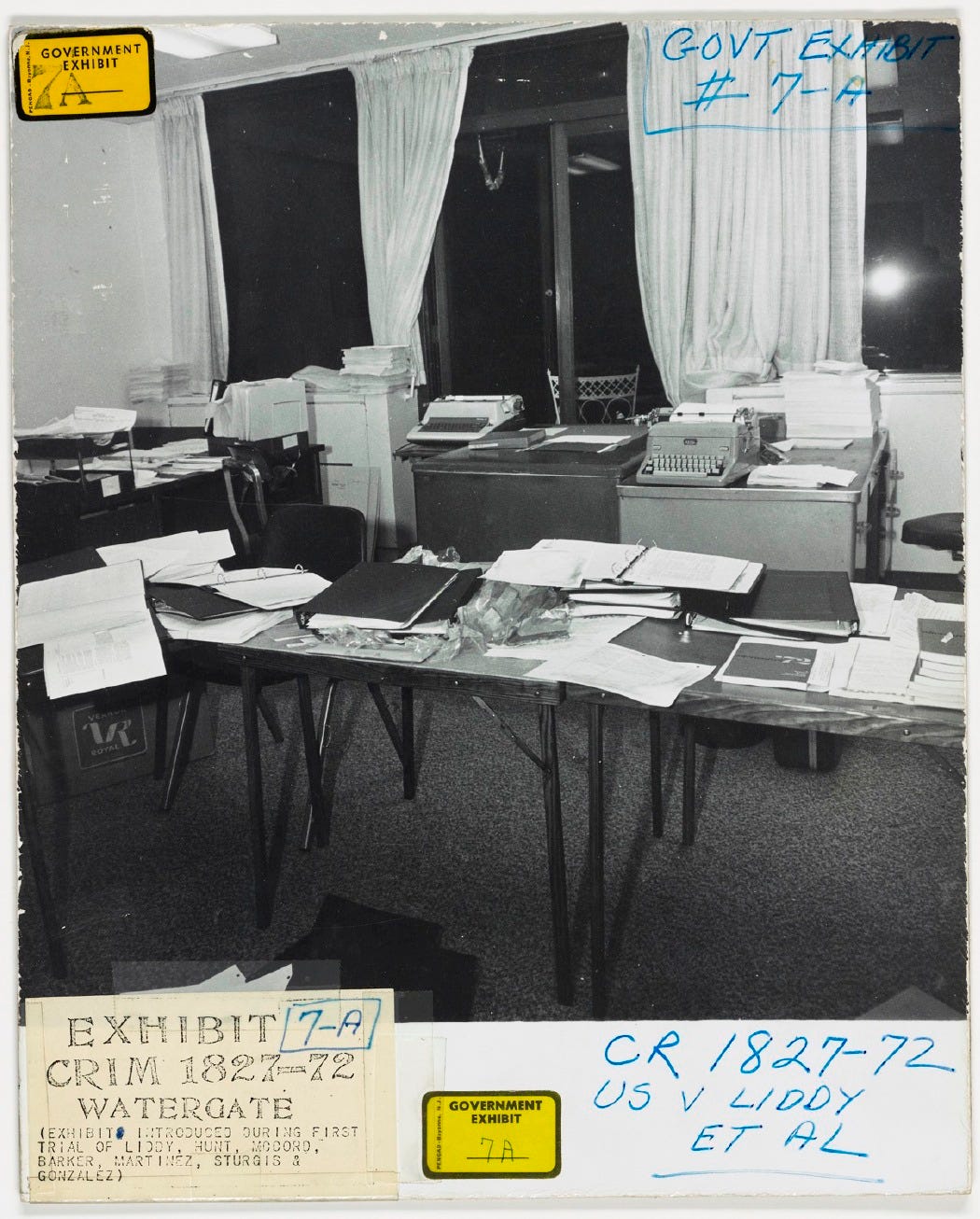Years of Intelligence
Selective transparency, limited hangouts, and deep photography from the Zapruder film to the Epstein video.
Following Watergate and controversial revelations about activities conducted by the US Intelligence Community (IC), the Senate Select Committee to Study Governmental Operations with Respect to Intelligence Activities chaired by Senator Frank Church, commonly known as the Church Committee, was established in 1975. It coincided with the Pike Committee (House Select Committee on Intelligence) and the Rockefeller Commission (President's Commission on CIA Activities within the United States) led by Vice President Nelson Rockefeller. These investigations comprised what became known as the “Year of Intelligence,” and resulted in disclosures such as the CIA’s mind-control program (MKULTRA), domestic surveillance operation (COINTELPRO), meddling with the press (Operation Mockingbird), and reports on an assortment of other illegal activities (the “Family Jewels” files). In the aftermath, Gerald Ford signed Executive Order 11905, outlawing foreign political assassinations carried out by employees of the US government, and Jimmy Carter expanded on this with Executive Order 12036 to further restrain the activities of intelligence agencies. These measures increased oversight of the IC but unintentionally encouraged a trend in which covert action was increasingly outsourced through private channels.1 Also, despite the acknowledgement and release of information pertaining to covert abuses of power, much remained classified and redacted, and files were destroyed before the congressional and presidential committees even formed. In the case of MKULTRA, Director of Central Intelligence (DCI) Richard Helms ordered thousands of documents to be destroyed before leaving the Agency in early 1973 as a preemptive measure in a media and political climate hostile to the CIA.
The selective transparency of the state is on display once again in the controversy over the Epstein files. When the DOJ and FBI released a joint memo in July definitively stating that Epstein committed suicide in his prison cell, it was accompanied by the release of hours of “raw” and “enhanced” versions of surveillance footage from the Metropolitan Correctional Facility Special Housing Unit (SHU) in which Epstein was held. The memo claims the “FBI’s independent review of this footage confirmed that from the time Epstein was locked in his cell at around 10:40 pm on August 9, 2019, until around 6:30 am the next morning, nobody entered any of the tiers in the SHU.” But there are inconsistencies between the memo, DOJ statements, and released footage. “The missing minute” of the video, just before the time counter turns to midnight, was explained away by Attorney General Pam Bondi as the time counter resetting, which she said happens “every year, every night.” However, CBS News reported that “a high-level government source familiar with the investigation told CBS News that the FBI, the Bureau of Prisons and the Department of Justice's Office of Inspector General are in possession of full unedited copies of the video, and those copies do not have a missing minute.”
In the days following the memo’s release, Wired published articles showing that even the “raw” footage had been edited, and that two minutes and fifty-three seconds were removed, more than just a missing minute. It is uncertain what the motivations are behind these alterations, but analyses of the video metadata create more room for suspicion and speculation. Additionally, the stairs leading up to Epstein’s cell tier are mostly obstructed from the camera’s view and, strangely, the digital recording system for cameras that would have provided a clearer view failed during the evening of August 9 into the morning of August 10. In its investigation, CBS News identified several inconsistencies between the conclusions of the FBI’s review of the video and what actually appears in the released footage. The report from CBS calls attention to an unidentified “orange shape,” which despite the obstructed view appears to move up the stairs to Epstein’s cell tier around 10:40 PM on August 9 but is never seen descending the stairs. The FBI claims this is a corrections officer carrying “linen or inmate clothing” up to the tier where Epstein’s cell was located. However, forensic video experts suggested to CBS that it was more likely a person in an orange uniform. Simply put, the released footage is a deeply unsatisfying piece of “evidence” for the DOJ’s claims, and the inconsistencies encourage alternative explanations for what happened in the SHU that night.
There have been rumors of Epstein’s ties to Intelligence, but no hard evidence has been uncovered. An expired Austrian passport with Epstein’s photo and a Saudi Arabian address under a different name (not released) found in Epstein’s safe after his arrest is puzzling and suspicious, but not a smoking gun.2 Rather than speculate on what exactly is being concealed about Epstein, I am interested in connecting the Epstein video to what I call “deep photography”—photographic intelligence that is suppressed, leaked, or destroyed. This includes classified reconnaissance imagery, surveillance footage, any instance in which the state withholds photographic intelligence. Deep photography borrows from Peter Dale Scott’s concept of deep politics, defined as “all those political practices and arrangements, deliberate or not, which are usually repressed rather than acknowledged.”3 We have come to expect some types of images such as photographs taken by spy satellites to be withheld, which the state justifies as a matter of national security. I argue that the Epstein video is an instance of a subset of deep photography that did not originate from the IC, but became the subject of intelligence investigations, and official and unofficial narratives surrounding them—another example being the Zapruder film.
In the aftermath of revelations from the Church Committee about CIA involvement in foreign assassination operations and its failures (along with the FBI’s) regarding President Kennedy’s assassination, and the first public broadcast of the Zapruder film (a bootleg version), the House of Representatives Select Committee on Assassinations (HSCA) was established in 1976 to reexamine the murders of President Kennedy and Dr. Martin Luther King Jr. The HSCA concluded in its 1979 report that the killings of both men were likely the results of conspiracies, the full details of which remain unclear. This contradicted the Warren Commission’s conclusion in 1964 that Lee Harvey Oswald had acted alone in Kennedy’s assassination, but the HSCA agreed with other aspects of the Warren report such as Arlen Specter’s (yes, that Arlen Specter) “magic bullet” theory. After the HSCA released its report, the committee recommended that the DOJ review its findings to determine if further investigation was warranted. A letter from Assistant Attorney General for the Criminal Division Bill Weld stated in 1988 “that no persuasive evidence can be identified to support the theory of a conspiracy in either the assassination of President Kennedy or the assassination of Dr. King.”4
Kennedy’s assassination was again revisited by Congress with the passage of the President John F. Kennedy Assassination Records Collection Act of 1992. As part of the law, an independent group named the Assassination Records Review Board (ARRB) was established to collect and preserve all pertinent materials for public access via the National Archives and Records Administration (NARA). Information obtained from interviews conducted by researchers while the ARRB was active as well as after it produced its final report in 1998 raise issues about the Zapruder film that remain unresolved. The following passage is an excerpt from my essay, “Deep Photography and the Politics of Overhead Reconnaissance,” included in my forthcoming monograph Critical Collection: Image Intelligence and Empire:
In an interview conducted by assassination researchers Doug Horne and Peter Janney in 2009, the widely respected photo-interpreter Dino Brugioni recounted his experience working with the original Zapruder film at National Photographic Interpretation Center (NPIC) headquarters in Washington, DC, on the evening of Saturday, November 23, 1963 [the day after Kennedy’s assassination]. Brugioni was a founding employee of NPIC, which was charged with the analysis of photographs taken by the U-2 spy plane and CORONA satellite. He recalled that the already developed 8mm Zapruder film was delivered by two Secret Service agents, who remained with Brugioni’s small team as they handled the film. The team printed several color enlargements of film frames selected by the agents, which Brugioni then arranged on two identical sets of briefing boards. Brugioni gave both sets to NPIC Director Arthur Lundahl, who would then bring them to DCI John McCone.
When asked about frame 313 of the Zapruder film, Brugioni was surprised to learn that the original film as it exists in the National Archives has only one frame showing a burst from Kennedy’s head wound. He recalls, “I think we made two [enlargements], just at the beginning of the blast and then the one that I remember was that there was a chunk of body, of his head, above his head and then there was like a little mist or cloud around it.” Brugioni, an expert photo-interpreter and ostensibly one of the first people to closely examine the Zapruder film, was certain there was at least one additional frame showing the explosion from the bullet’s impact: “What I saw was more than [frame 313] . . . I remember the scatter was high, say three or four feet from [Kennedy’s] head . . . the one I saw, [the debris] was way high off of his head. I can’t imagine that there’d only be one frame.” Brugioni was confident that the footage in the National Archives is not what he saw on November 23, 1963. To complicate things further, the NPIC briefing boards in the National Archives are not the ones Brugioni made. According to [ARRB] interviews with two other confirmed NPIC employees, Ben Hunter and Homer McMahon, an unsplit 16mm version of the Zapruder film was brought to NPIC by a single Secret Service agent on the evening of Sunday, November 24, 1963, when Brugioni was off duty. Hunter and McMahon were tasked with creating enlargements but not briefing boards. However, the CIA turned over four briefing boards to the National Archives in 1993 that display the enlargements made by Hunter and McMahon. Brugioni was never informed by Director Lundahl or any other NPIC employee about the November 24th project, which is unusual considering he was in a senior position as chief of information. If Brugioni’s recollection is correct, the missing frame(s) of the Zapruder film would be deep photography with the potential to alter the official assassination narrative.5
Of course, there is no metadata to back up implications of excised Zapruder film frames as with the Epstein video, but the strange circumstance of multiple film versions claimed to be the original being brought to NPIC for analysis without its chief of information and best photo-interpreter fully involved should give one pause. This information in combination with all the other inconsistencies and contradictions in evidence and accounts of events surrounding the assassination continue to encourage suspicion of official narratives. In 2023, the Biden Administration stated that 99% of the JFK records have been made public, and the Trump Administration’s exercises in selective transparency with regard to the assassinations of JFK, MLK, and RFK have done nothing to undermine the narratives held up by the US government. Given the dirty tricks that defined the CIA’s activities preceding the “Year of Intelligence,” it is not unreasonable to wonder what assassination files may have been destroyed before investigations were conducted by congressional and presidential committees, as Helms had ordered with MKULTRA records.
There are other times that could be considered a “Year of Intelligence”—1987 (Iran-Contra hearings), 2010 (WikiLeaks US diplomatic cables), 2013-14 (Snowden leaks and CIA torture report), and 2016-19 (Steele dossier, Clinton emails, and “Mueller report”). However, what makes the Epstein controversy reminiscent of the Watergate era is that given the selective transparency of the Trump Administration’s disclosures and many inconsistencies, we may be seeing a Nixonian “modified limited hangout” in which facts are mixed with false information and the most incriminating details are withheld. In intelligence terms, a “limited hangout” is the voluntary release of select information while concealing the most significant details, the goal being that this partial reveal prevents interested parties from pursuing the matter further. “Modified limited hangout” came from the audio recording of the March 22, 1973 Oval Office meeting between President Nixon, White House Counsel John Dean, White House Domestic Affairs Advisor John Ehrlichman, former Attorney General and campaign manager John Mitchell, and White House Chief of Staff HR Haldeman, in which the men discuss plans to release a report from Dean admitting that members of the Committee for the Re-election of the President (CREEP) were perpetrators of the Watergate break-in and given payments, but claiming the president was unaware of such activities or a cover-up. Here is an excerpt from the transcript of the recorded meeting:
PRESIDENT: The, uh--Now, uh, we could--Have you considered any other poss--, have you considered the other, all other possibilities you see here, John? You, you're the one who is supposed to--
DEAN: That's right. I think we,
PRESIDENT: You know the bodies.
DEAN: I think we've had a good go-round on--
PRESIDENT: You think, you think we want to, want to go this route now? And the--let it hang out, so to speak?
DEAN: Well, it's, it isn't really that--
HALDEMAN: It's a limited hang out.
DEAN: It's a limited hang out.
EHRLICHMAN: It's a modified limited hang out.
PRESIDENT: Well, it's only the questions of the thing hanging out publicly or privately.
DEAN: What it's doing, Mr. President, is getting you up above and away from it. And that's the most important thing.
PRESIDENT: Oh, I know. But I suggested that the other day and we all came down on, uh, remember we came down on, uh, on the negative on it. Now what's changed our mind?
DEAN: The lack of alternatives, or a body. (Laughter)
EHRLICHMAN: We, we went down every alley. (Laughter) Let it go over.6
Instead of implementing this plan, John Dean flipped on Nixon a week later and volunteered to cooperate with the DOJ’s criminal investigation. Dean’s June 1973 testimony before the Senate Watergate Committee revealed, among other things, that the president had attempted to pressure the CIA into interfering with the FBI’s investigation of the break-in.
This brings us to another point of comparison between Nixon and Trump—the distrust and hostility between their presidential administrations and parts of the IC, particularly the career bureaucrats at the CIA. Jefferson Morley’s excellent book released upon the fiftieth anniversary of the DNC break-in, Scorpions’ Dance: The President, the Spymaster, and Watergate, details the power struggle between Nixon and DCI Richard Helms as the scandal unfolded. In the days following the June 1972 break-in, Nixon and Haldeman planned for Haldeman and Ehrlichman to approach Helms with a request for him to tell the FBI to back off the investigation, under the false pretense that the Bureau’s probe would interfere with an ongoing Agency covert operation in Mexico. The conversation between Nixon and Haldeman was captured on what became known as the “smoking gun” tape:
NIXON: When you get in to see Helms, say: ‘The President believes that it is going to open the whole Bay of Pigs thing up again.’7
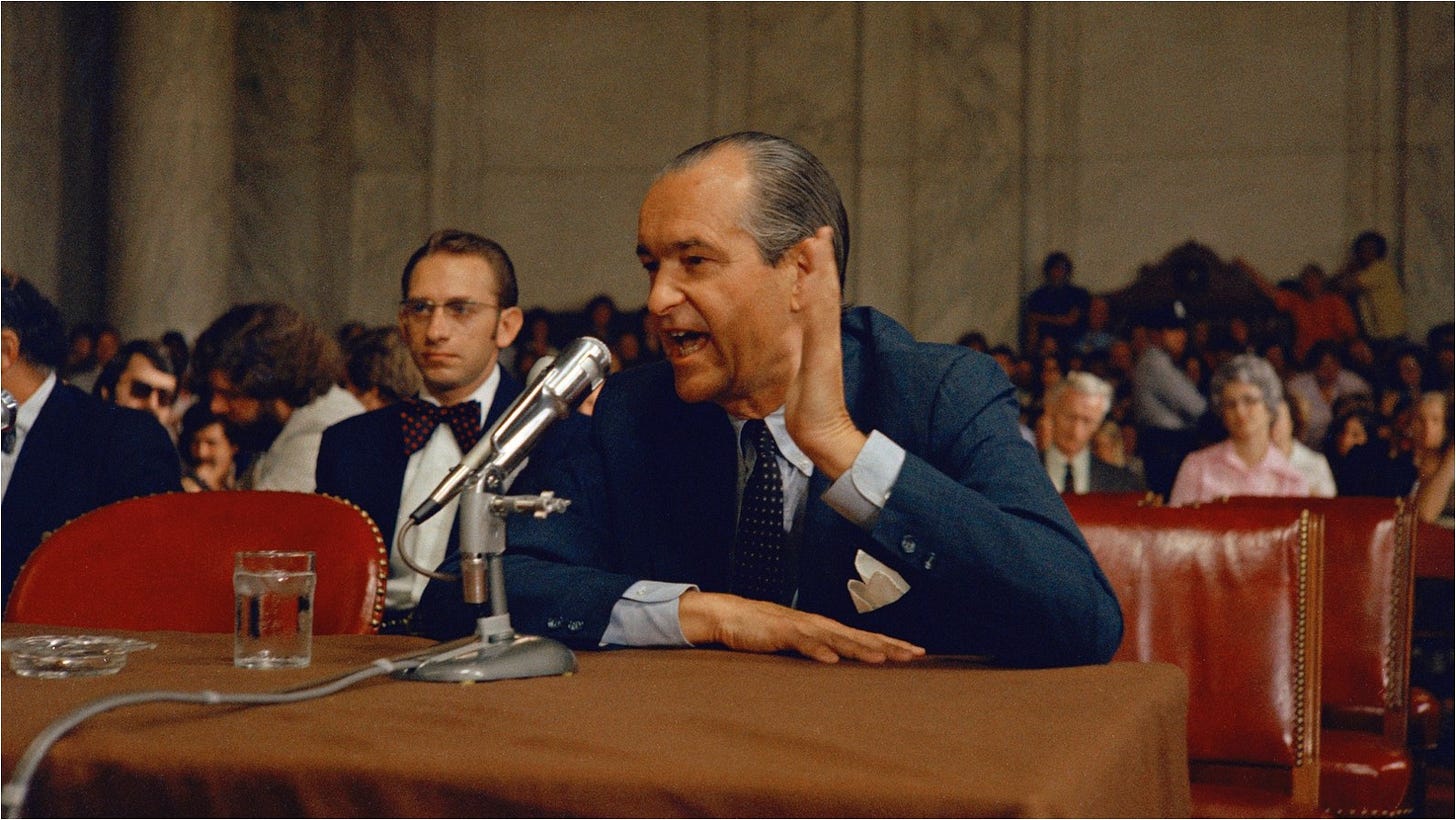
Nixon believed he had leverage over the CIA because of its assassination programs and other covert operations, which would cause a crisis for Helms and the Agency if made public. However, Helms was incensed when Nixon’s men made the request and refused to cooperate with a coverup. In December 1972, after Nixon’s re-election, Helms was dismissed as DCI but given an appointment as ambassador to Iran. He would later testify before the Senate Watergate Committee in August of 1973 and deny any CIA involvement in Watergate, although all five burglars had CIA connections (four out of the five were directly involved in the “Bay of Pigs thing”), and the break-in was planned by former agent E. Howard Hunt (also involved in the invasion), who Helms had worked closely with in the ‘50s and ‘60s.8
The tension between Nixon and Helms was emblematic of a general antipathy Nixon had for the CIA and other bodies such as the Joint Chiefs of Staff. Cut out of Nixon and Kissinger’s foreign policy decisions, the Joint Chiefs spied on Nixon in 1970-71 in a scandal known as the Moorer-Radford Affair. Nixon became aware of the operation in 1971, but decided not to reveal it, believing this would give him leverage over the Joint Chiefs and Pentagon. The scandal was not public knowledge until after Watergate, in 1974, and even then, it did not become widely known until much later. Nixon had long been wary of elements of the IC and military-industrial complex, fearing they had become a “state within a state,” what would be called the deep state today. However, Nixon formed his own miniature deep state to execute the White House’s covert agenda.
Trump’s tensions with the IC have been much more overt. He has publicly contradicted intelligence assessments on many occasions and accused the IC of undermining his legitimacy with narratives of election interference by Russia. His appointment of loyalists to the command posts of Central Intelligence, National Intelligence, and the FBI is seen as a blatant politicization of the IC. The president portrays himself as the number one enemy of the deep state and an anti-establishment politician, but he has had close connections to powerful establishment types throughout his life, perhaps most significantly his mentor, Roy Cohn. The influential lawyer prosecuted Julius and Ethel Rosenberg, served as Senator Joseph McCarthy’s chief counsel (at the recommendation of J. Edgar Hoover), represented elites like Rupert Murdoch (who Cohn introduced to Trump), and was close with the Reagans. Cohn was a board member of the Western Goals Foundation, a private intelligence agency founded in 1979 and dissolved in 1986 (the year Cohn died) after being implicated in the Iran-Contra Affair. Trump’s relationships with elites and alignment with establishment interests have continued in his political career. Wall Street and neoconservative figures have held positions in his administrations, and a proposed increase in the defense budget to just over one trillion dollars for fiscal year 2026 is anything but a war on deep the state. Even as Trump and his allies appear to disrupt the neoliberal order, they still engage in and benefit from a deep political system in which private interests and the military play significant parts.
The Wall Street Journal reported on July 23 that in May, Attorney General Bondi notified Trump of his name’s appearance in the Epstein files, following news of FBI personnel being told to flag mentions of Trump in the files. Of course, none of the above information is hard evidence of Trump’s involvement with Epstein’s crimes, but the manner in which the matter has been handled invites speculation. If the editing of the prison video was done to cover something up, or if there is other damning information in the case files, we may only find out from a leak. Whether it needs to reveal or conceal, Intelligence always finds a way.
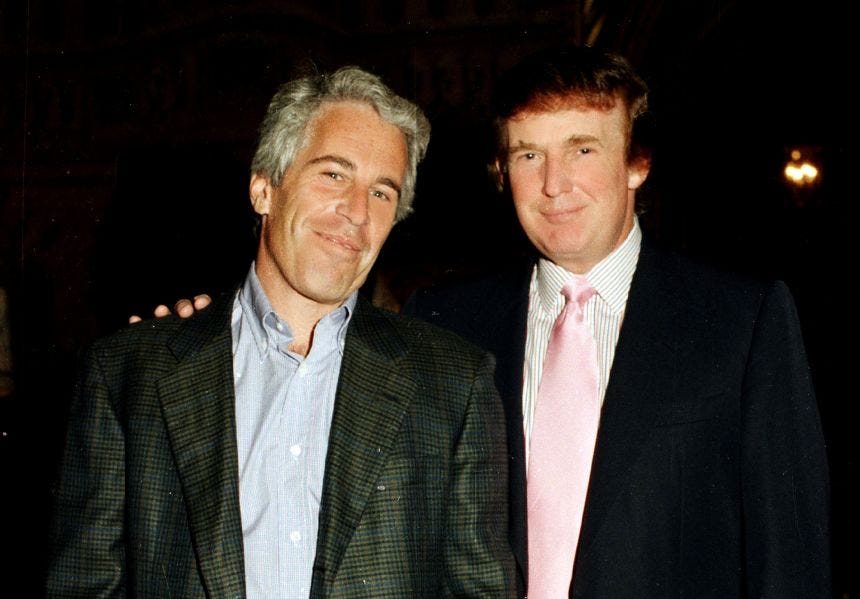
Intelligence networks such as the Safari Club were formed in the post-Church Committee milieu to avoid oversight, and used CIA funds laundered through Bank of Credit and Commerce International (BCCI) to operate.
Among Epstein’s financial clients in the ‘80s was Saudi arms dealer Adnan Khashoggi, who arranged the sale of weapons in the Iran-Contra Affair.
Peter Dale Scott, The American Deep State: Wall Street, Big Oil, and the Attack on American Democracy (Rowman & Littlefield, 2015), 12.
"Letter from Assistant Attorney General William F. Weld to Peter W. Rodino Jr., undated." The Harold Weisberg Archive Digital Collection, Hood College, Frederick, MD.
Evan Hume, “Deep Photography and the Politics of Overhead Reconnaissance,” Critical Collection: Image Intelligence and Empire (Daylight, 2025), 103–104.
"Transcript of a recording of a meeting among the President, John Dean, John Ehrlichman, H.R. Haldeman, and John Mitchell on March 22, 1973 from 1:57 to 3:43 p.m." Richard M. Nixon Presidential Library and Museum, Yorba Linda, CA.
“Transcript of a recording of a meeting between the President and H.R. Haldeman in the Oval Office on June 23, 1972, from 10:04 to 11:90 a.m.” Richard M. Nixon Presidential Library and Museum, Yorba Linda, CA.
Helms believed the Bay of Pigs invasion (Operation Zapata) would likely fail, and kept his distance from the plan. However, he was given charge over Cuba operations by incoming DCI John McCone after DCI Allen Dulles and Deputy Director of Plans Richard Bissell were forced to resign due to the Bay of Pigs fiasco.


